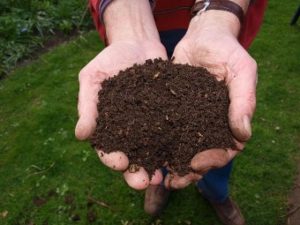4 Ways to Compost in Winter
Composting in Cold Weather
by Sandy Swegel
It snowed yesterday. It’s going to snow again today. This makes me so happy because it means I get a vacation from work. My gardening business is a lot like a teacher’s schedule. Work like crazy most of the year then I get a wonderful interlude to catch up on the rest of my life. Working in the garden may come to an end during Colorado winters, but eating usually continues and we continue to make lots of food scraps that any gardener would hate to waste.
When I lived on acreage, I did all my food composting by sending it through the chickens. The backyard chickens loved food scraps and eagerly ran around when I brought the compost bucket. Even if it was just onion scraps and things they didn’t like to eat, they relished scratching it around and mixing it with the coop bedding and poop. Spring compost in the making.
Without chickens, there are still ways that you can compost in winter and capture your kitchen scraps:
1. Use your regular compost bin
I empty mine to about ¼ full of compost in progress with lots of worms. I fill it all the way to the top with dry leaves and sort of hollow out the center. The leaves don’t freeze solid and all winter I drop the scraps down the middle of the leaves. The leaves provide some insulation and the food scraps and leaves at the bottom of the pile are warmed enough by the earth that a tiny bit of composting keeps happening even when temps get well below freezing. The earthworms are slow but still keep working and reproducing.
2. Compost in a protected sunny spot
Keep a plastic (black if possible) bin against the house on a sunny side. I started with the bin half full of partially finished compost that hopefully has some worms already busy in it. The center, next to the ground, will stay unfrozen so the worms will stay alive. The compost probably won’t process much over the winter except on sunny days. You may need to secure it against raccoons or other varmints.
3. Make a trench
This takes a bit of planning before the cold weather arrives, but produces amazing results and saves time and labor. Dig a long trench right in the garden…about a foot deep and a foot wide. Leave the soil heaped right next to the trench with a rake nearby. I left the excavated dirt on the side of the trench. Every time the indoor compost bin was full, I just took it out to the garden and dumped it into the trench. If things weren’t too frozen, I pulled some of the excavated dirt on top of the food scraps. If there was snow on the ground, I just put the scraps on top, and eventually, it fell into the trench.
This process attracts all the worms to the trench. Some composting takes place in the Fall but most decomposition happens in early Spring. By early May, when it’s time to plant tomatoes, the compost is broken down enough that I can transplant my tomatoes directly into the filled trench that is crawling with decomposers and happy earthworms. If it was a very cold winter and the compost isn’t finished, just plant right next to the trench. Some people like to compost in trenches all year. They set up a three-year rotating system where they compost one year, plant the next and use the area as a walkway the third year. Pretty clever!
4. Make a windrow
John, the Worm Man, Anderson in northern Colorado keeps his worms happy all winter by setting up short windrows of compost, food scraps, and worms. He throws old carpet or tarps over the top. Periodically, he lifts the carpet and puts new scraps on top of the piles. The worms slow down in winter but keep working and reproducing. For small households, just make a pile on the ground and cover it with a tarp. The tarp keeps moisture and some heat in. Just slip the food under the tarp. Worms show up. This doesn’t work so well if you have raccoon or mice and rat issues.
June Garden Chore List
Gardening Tips
By Heather Stone
Here are some June garden chores to keep your veggies and flowers going strong.
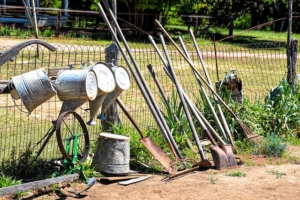
Photo courtesy of pixabay
- Cage or trellis any vining vegetables such as cucumbers, beans and tomatoes. By training these vegetables to grow up you are saving precious garden space and keeping the fruit off of the ground and away from critters. Click here for trellis ideas!
- Continue watering your vegetable and perennial beds. Try to keep water close to the roots and off of leaves. Checked potted plants often, they tend to dry out faster.
- Keep up with the weeds! This can start to feel like a never-ending battle at this time of year, but keeping the weeds under control means more nutrients, water and sunlight for your vegetables and flowers.
- Mulch around vegetables to help conserve water.
- Side dress with compost for a mid-season boost.
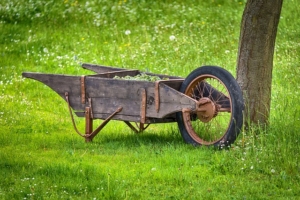
photo courtesy of pixabay
- Begin replacing cool season crops that have begun to wind done or have bolted from heat.
- Plant successive crops of summer greens like collards, kale, chard and lettuce (Protect them from hot afternoon sun).
- Transplant any remaining warm season vegetable starts.
- Keep an eye out for pests.
- Keep your birdbaths full and clean.
- Plant a new patch of bush beans every couple of weeks.
- Pinch out suckers on your tomatoes.
- Keep deadheading perennials for continued bloom.
- Sit back, relax and enjoy your garden.
Three Ways to Compost that Will Fit Your Lifestyle
 Composting Basics
Composting Basics
by Sam Doll
Composting seems like ‘all the rage’ right now! Taking some of your food and paper waste out of the landfill is a great way to reduce your waste, take care of the environment, and create an excellent supplement for your (or a lucky neighbor’s) garden! We’ll show you three ways to compost that will work with your lifestyle.
No matter where or how you are composting, there are some basic guidelines to be aware of.
First off, if you are composting at home, you want to avoid any animal products like meat and dairy (eggshells are fine). These products can create unwanted odors and attract pests like raccoons!
You also want to be aware of how much brown and green material that is going into your compost. Brown material is any dry, carbon-rich material. This includes shredded paper, dried leaves, or old plant material. Green material is nitrogen-rich material like food scraps, eggshells, grass clippings, and coffee grounds.
When composting you want to include equal amounts of brown and green materials. If you are using an outdoor composting system, you’ll want to alternate layering brown and green materials, usually starting with brown.
Finally, you can’t let the compost just sit. Mix it and water it to keep the microbes happy and healthy. Mixing it incorporates oxygen and watering cools the pile and prevents it from drying out.
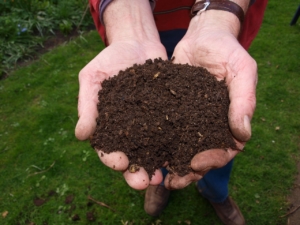
Indoors
You may have been reading this and thinking, “I have an apartment, I can’t compost!”. Composting inside can be difficult, but it’s not impossible!
The simplest solution is to find a neighbor, community garden, or farmer who would love to add your food scraps to their compost pile. Just store your scraps in a plastic bin with a lid and run over to the pile every few days.
If you don’t have a friend with a compost pile, you can still do it yourself. Many people have found great success in vermiculture, or “worm farming”! Vermiculture is a quick, odorless composting method that is great for those without access to a yard.
Check out this guide for various vermiculture methods and tips!
In-Vessel Composting
Have a little outdoor space, but don’t want to devote half your yard to composting? There are specialized composting bins that can handle all your household waste, speed up the composting time, and stay out of sight.
One of the fastest methods of the three ways to compost is to use a tumbler. Tumblers are plastic drums that can be rotated to mix the compost easily without getting your hands dirty. They are contained and inconspicuous. We recommend double-chambered rotating compost bins like this, which can turn scraps to finished compost in as little as two weeks.
There are also plastic compost bins. These bins are open at the top and bottom. You usually add fresh material to the top and wait for finished compost to be scooped out of the bottom. These bins require little work, just the occasional watering, but can take a while longer than the rotating drum. We recommend this classic Soil Saver from All Green.
These composters are great and beginner-friendly, but they have limited capacity. They can handle an average household’s compost, at most, and that doesn’t include yard waste like grass clippings. If you want something that can handle a larger amount of compost, you’ll have to pursue more traditional methods.
Worms in my Kitchen?
Composting Indoors
by Cheryl Soldati Clark
What is Vermiculture?
Vermiculture is more than just a funny word, it is the process of using worms to decompose food waste. The worms turn the waste into nutrient-rich material that will ensure healthy & happy plant growth. It is nature’s way of recycling! This method is a sustainable way to save energy, water, landfills and it reduces the need for synthetic fertilizers. You can feel good about not throwing your kitchen scraps down the kitchen disposal or contributing to the over-crowding of our landfills. You can even have a worm bin indoors without any odor or mess!
How to Get Started on Your Indoor Worm Bin…
You Will Need:
Cardboard (Optional) – Can be used to cover bedding to lock in moisture
Rubbermaid or Wooden Container with Lid – Recycled containers work great, just make sure that they have never been exposed to chemicals. A 1’x2’x2’ bin can hold kitchen waste from families of 2 people. A 1’x2’x3’ bin can hold kitchen waste from families of 4 to 6 people. You don’t want a very deep bin because worms feed in the top layers of bedding.
Bedding (Newspaper) -Black ink on newspapers is made of Carbon and oils and is not toxic to worms. Colored ink should not be used.
Yard Waste (Optional) -Decaying leaves from your yard makes a great composting material to add to your worm bin.
A handful of Soil – Provides the grit that worms need to break down food in their gizzards because they don’t have teeth.
Red Wiggler Worms – Number of worms depends on your daily food waste. One pound of worms can eat ~3.5 lbs. of waste per week.
Moisture – To wet down your bedding & worms also need moisture in order to breathe.
Step by Step Instructions:
Step 1:
Use a drill or hammer & nail to poke 1/8-1/4” air holes in your bin 1 inch apart. You want some holes on the bottom for drainage, on the lid of the bin and along the top of the four sides. Make sure to raise the bin on bricks or wooden blocks with a tray underneath to catch the excess liquid that can be used as a liquid fertilizer for your plants.
Step 2:
Shred newspaper (black & white ONLY) into 1-inch strips. Moisten strips and squeeze out excess water. The newspaper should not be soggy, just damp. Fill ¾ of the bin with moist shredded newspaper, decaying leaf litter (optional) and a handful of dirt and then mix it all together. You want the bedding to be fluffy not packed down. Let bin sit for a day before you add your worms.
Step 3:
Separate your vermiculture worms from the packing material that they came in. Scatter them in your bin. Feed them slowly at first so they can acclimate to their new environment and to monitor the rate at which they break down waste.
Step 4:
Feed your worms foods that they love and avoid the foods that they dislike (listed below). Don’t forget to harvest your compost every couple of months because your worms will continue to break down their bedding material.
Step 5:
After you have fed your worms for 3-6 months you will see some worm compost/castings on the bottom of your bin. It will be very dark in color and extremely rich in nutrients. You can harvest what is there or you can wait until your bin is really full. Worm castings are toxic to worms, so if you have mostly compost and not a lot of food or bedding left in your bin, then it’s time to harvest. Whatever method you choose, the key to harvesting is to separate your worms from the compost. Your worms will not survive if you put them in your garden with the compost.
To harvest your compost, you have a couple of different options:
- Your worms will be in the top 1/3 of your bin. You can remove the top 1/3 of worms, bedding & food and set that aside. Once you remove the compost from the bottom of your bin, then you can put your worms and remaining bedding/food back into the bin, add fresh bedding and resume feeding and maintaining your bin.
- If you have a larger bin, then you can push all of the material in your bin to one side and add new material to the empty half of the bin. After a month or so, when it appears that the worms have moved over to the new side, then you can harvest the compost from the other side.
- Spread the contents of your worm bin out on a plastic sheet/table cloth in the sun or under a bright light. Your worms will start moving down into the compost to get away from the light. About every 20 minutes you can scoop up the top layer of compost and the worms will move down again. Repeat this method for a couple of hours until you are left with a wiggly pile of worms that have been separated from the compost. Return the worms to their bin with fresh bedding immediately.
*You can’t save all of the worms, but using one of the three methods listed above will help to ensure that you save the majority of them!*
Here is an instructable with more information and photos:
https://www.instructables.com/id/Multi-Layer-Vermiculture-Bin/
12 Easy Ways to Save Water Now

Photo courtesy of kaboompics / pixabay
Saving Water
by Heather Stone
No matter where you live reducing your water use is important. Water is a finite resource and we are using more of it than ever. Did you know that the average American uses 88 gallons of water a day at home? In comparison, Europeans use about half that and in sub –Saharan Africa persons average only 2-5 gallons a day. Now most of us aren’t likely to get our water usage to that level, there are many ways we can reduce our water consumption in the home.
When it comes to saving water, the little things do really add up. Here is a list of 12 easy things you can do in your home to reduce your water consumption and lower your water bill.
1. Repair leaks. Drip, drip, drip. This is the sound of a precious resource being wasted. Fix those leaking toilets and showers! This can make a big difference. The average family can waste 180 gallons per week or 9,400 gallons of water annually from household leaks. Nationwide, these household leaks can waste almost 900 billion gallons of water in a year. Not sure if your toilet is leaking. Place 10-12 drops of food coloring in your tank, don’t flush. Check back in thirty minutes. If there is color in the bowl, you have a leak.
2. Install water saving fixtures like faucet aerators and low flow showerheads. These low cost and easy to install items can significantly reduce water volume. If you have a little more money to spend replacing your old toilet with a low –flow model can save 50-80 gallons of water a day.
3. Don’t use your toilet as a wastebasket. Whenever you flush that tissue or bit of trash down the toilet you’re wasting gallons of water. Put it in the trash instead.
4. Take short showers instead of baths. Turn off the water while you are soaping up.
5. How many gallons of water go down the drain while we wait for the shower to warm up? Collect that water in a large bucket and use it to flush the toilet or water plants.
6. Turn off the water to brush your teeth. The average faucet releases 2 gallons of water a minute.
7. Fill the sink to shave instead of letting the water run.
8. Only run your dishwasher when it’s full.
9. Fill a basin with water for rinsing your dishes. Use this water to water your plants or flush your toilet.
10. Limit the use of your garbage disposal. Try composting those food scraps instead!
11. Wash your fruit and veggies in a tub or bucket instead of rinsing under running water. This can save gallons of water from going down the drain.
12. Only run your washing machine when it’s full and skip the permanent press cycle. Most machines use 5 gallons of water for that extra rinse.
Want to determine your personal water footprint? Check out this water footprint calculator.
The Importance of Soil
by Engrid Winslow
Let’s talk about getting your vegetable and flower beds ready for planting by preparing the soil. No matter how great your soil seems to be, your new plants will welcome a boost of vital nutrients. Tomatoes, onions, peppers and other vegetables are known as “heavy feeders”. This means they need (and therefore remove) lots of minerals from the soil they grow in. Without fertile soil, many plants will struggle to produce those tasty fruits and vegetables, and beautiful blooms.
5 Tips to Improve Your Soil
1. Add compost: Make your own or purchase a quality one such as mushroom compost. You may also like chicken manure based, beer industry bi-products or even dairy cow manure. Avoid compost made from curbside recycling (who knows what is really in there) or anything with steer manure, usually very high in salt. Spend a little extra on better quality and your garden will thank you with beautiful vegetables and flowers.
2. Use fertilizers: A mild, organic fertilizer is best and can range from fish emulsion to compost tea or kelp. Seek out a liquid fertilizer that is a balanced mix of nitrogen, phosphorus and potassium. Look for a label with low numbers for each of these 3 minerals. See below for an example (3-3-2).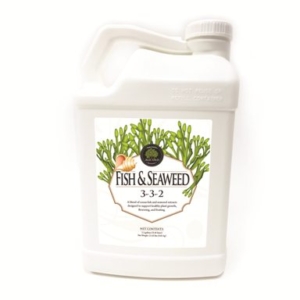
3. Cover the soil all year: Use mulch (shredded leaves are perfect) and cover crops when you are not growing vegetables. This will help keep weeds at bay and adds nutrients to the soil.
4. Rotate vegetables: Don’t grow the same vegetables in the same place every year, especially those “heavy feeders” (mentioned above). It’s best to give the soil a three-year break between them to avoid diseases and soil depletion. Remember that some crops (peas and beans in particular) actually add nutrients to the soil they are grown in.
5. Encourage worms: Worm castings are expensive but have such great qualities that even a little bit is well worth it. The more you amend your soil over time, the better it becomes and somehow worms find their way to worthy soil.

Stop the Powdery Mildew Cycle this Fall
Gardening Tips
by Sandy Swegel
Powdery mildew had a grand time in my garden this year. I often have a nonchalant attitude to it growing on a few leaves and don’t mind a little bit. But it started early this year on roses, then showed up on the bee balms and finished out the season inundating the sweet peas and squashes. By the time I paid attention, it was out of control.
But now it’s Fall and my inner lazy gardener says…ah well this season is over. Next year it will be different. But if we want to make progress against disease in our gardens, now is the time to act.
Do you Want Less Disease in your garden next year? Then take these steps now:
In the Vegetable Garden
As your squash and cucumbers and pea plants are dying back, remove those leaves and put them in the trash. Not in the compost pile. Don’t let them overwinter and deal with it in the Spring. Fungus and disease spores are sitting passively on the backs of those leaves, just waiting for rebirth next Spring. They do not reliably die in home compost piles. Powdery mildew will survive the winter by forming minute fruiting bodies called cleistothecia And tomatoes? I put the whole plants in the trash after frost. There are just too many diseases on them to risk.
In the perennial beds, leaves infected with powdery mildew like rose or phlox or bee balm often drop before Fall. Before the big tree leaf fall, I use the blower to blow the diseased leaves out of the bed and PUT THEM IN THE TRASH.
This vigorous sanitation is a good idea for all pests too. If you had bean beetles…get rid of those leaves that might have next year’s eggs.
But don’t be too clean.
That’s the important lesson here. In the non-diseased parts of the garden, ladybugs and lacewings and lots of beneficial insects are going to lay eggs and overwinter. We want them. I learned last year especially to let willow leaves be…there were dozens of beneficial babies at the base of willow plants last spring.
And next year…be attentive to the powdery mildew. I now promise to treat early and often with something gentle but effective such as horticultural oil or a baking soda. I lost a lot of production in my vegetables this year because I let the powdery mildew have its way. And the roses and phlox really took a hit. I’ll do better next year. I promise.
Photos:
ipm.ucanr.edu/PMG/PESTNOTES/pn7406.html
startorganic.org/tips-for-treating-powdery-mildew/
Weeds Are Our Friends
Tips for Weeds
by Sandy Swegel
Say what? Well, Spring weeds ARE my friends. August weeds not so much. But Spring is finally overcoming winter and the big leafy weeds are the proof.
So what’s to love about Spring Weeds? The most important thing is they are an abundant source of food for pollinators. They are also delightfully pretty if you don’t think of them as weeds. I especially love the wild mustards. Invasive in lawns and on bare garden soils, blue mustards’ very tiny blue flowers are everywhere and are an excellent food source for awakening bees. Bees can’t live on dandelions alone you know.
To a gardener, the best part about spring weeds is WEED TEA and COMPOST.
Weeds, especially the perennial ones like dock and thistle, are an excellent source of nutrients because of their deep tap roots. To capture these nutrients in a usable form, you have to break down the plant tissue. The easiest thing to do is just keep throwing the leaves on the compost pile. This time of year your compost bin has too many “browns” anyway with all the dead winter material. The “greens” of spring coupled with warm weather jump-starts your pile.
But if you want to really get all those nutrients available to your plants and soil, you’ll want to make some Weed Tea.
Weed Tea Recipe
Get a big container. A Rubbermaid garbage can will work, or make a small batch in a 5-gallon bucket. Put in all the weeds you can gather. I throw in cut leaves and whole plants. Put this container someway far away from your back door where you can’t smell it!
Here’s what’s going in my bucket:
Yellow dock leaves…these are everywhere.
Pulled or dug thistles.
Comfrey if you have it….these are especially full of nitrogen, phosphorus and potassium.
Nettles. Wear gloves.
Crabgrass with clumps of dirt still attached.
Dandelions, salsify, prickly lettuce, even bindweed if it’s up already. Nothing’s going to survive this stew.
Pond scum.
Now fill your container with water at least 12 inches over the plant material. And let stand until it is a disgusting gooey stew of fermented and stinking rotted material. Stir weekly. That smell is anaerobic decomposition. If the weather is warm, this takes maybe 10 days or as long as 4 weeks if it’s cooler. That’s it. You’ve made the best fertilizer you will ever use. Capture the liquid to use to pour directly (I dilute about 1 part weed tea to 4 parts water) on your garden beds. Strain some and put it in a sprayer for foliar feeding. Hold your breath and throw the stinking mess of weed material on your compost pile.
My favorite use of weed tea is to use it as a foliar feed and watch the treated plants green up overnight. This is especially good on tomatoes. Spring Weeds really are a gardener’s friend!
Photo credits
http://wildfoodgirl.com/2013/denver-mustard-mania/
http://permaculturenews.org/2013/12/06/simple-recipe-fertilizer-tea/
Growing for Chickens
What to grow for your chickens
By Sandy Swegel
Reading our Facebook posts lately on how yummy eggs from backyard chickens are got me thinking about what makes homegrown eggs taste so much better than store eggs.
A varied diet helps a lot. Commercial chickens pretty much get a straight corn-based diet with vitamins and minerals added in. Happy home chickens can still eat commercial food, but they usually get lots of food scraps too. That’s when the eggs start tasting better. When the chickens get lots of protein like bugs and worms, that’s when the eggs get really good.
Here’s what my chickens love:
Kitchen Scraps
Any and all scraps go to the chicken. Even meat if it is cooked. (The shocking secret I learned about chickens is that their favorite food is chicken….especially the scraps from fried chicken.) Chickens aren’t terribly smart in general, but they are savvy about food. If something is moldy or too full of pungent foods like onions, they just scratch it aside looking for bits of fruit or tomatoes or meat. Their favorite foods are things kids like. Noodles are a big hit. So are cherry tomatoes.
Weeds and Garden Waste
All the crab grass, dandelions, seed heads, dock leaves, grass clippings, etc go into the chicken run. They go for the greens and seeds first and push the other stuff around. Grass is apparently yummier in the Spring than in mid-summer when they just look at me and say “Meh.”
Bugs
This is the best secret to having delicious eggs….lots of proteins especially from living crawling things. All those kitchen scraps and weeds that don’t get eaten get raked into the corner and turn into compost with lots of earthworms. At some point in their random scratching, the chickens figure this out and turn the compost pile with great delight. Somehow plenty of earthworms manage to survive. I throw in extra bugs too: slugs, cabbage worms, box elder bugs, maggots, anything I don’t want in the garden. One other icky-to-think-about critter they really love to eat are mice.
Spent beer grains
Our local breweries put out their spent grains and hops for farmers and gardeners to recycle. These grains are usually a bit fermented which makes the chickens very very happy. The fermentation adds extra nutrition, happy, slightly drunken chickens make delicious eggs.
More greens
My chickens have to stay in a fenced run because of the large number of foxes and coyotes in our area. So I plant food all around the edges of the run so they can reach their heads through the fence to nibble but not actually destroy the plants by pulling them up. Currently growing are comfrey, chard (their favorite, I think they like the salt), kale, and wild grasses and dandelions (they like the flowers).
So plant for your chickens and they will reward you with the best-tasting eggs and lots of entertainment.
Photo credits:
http://www.urbanfoodgarden.org/main/composting/composting—compost-bins-in-chicken-run.htm

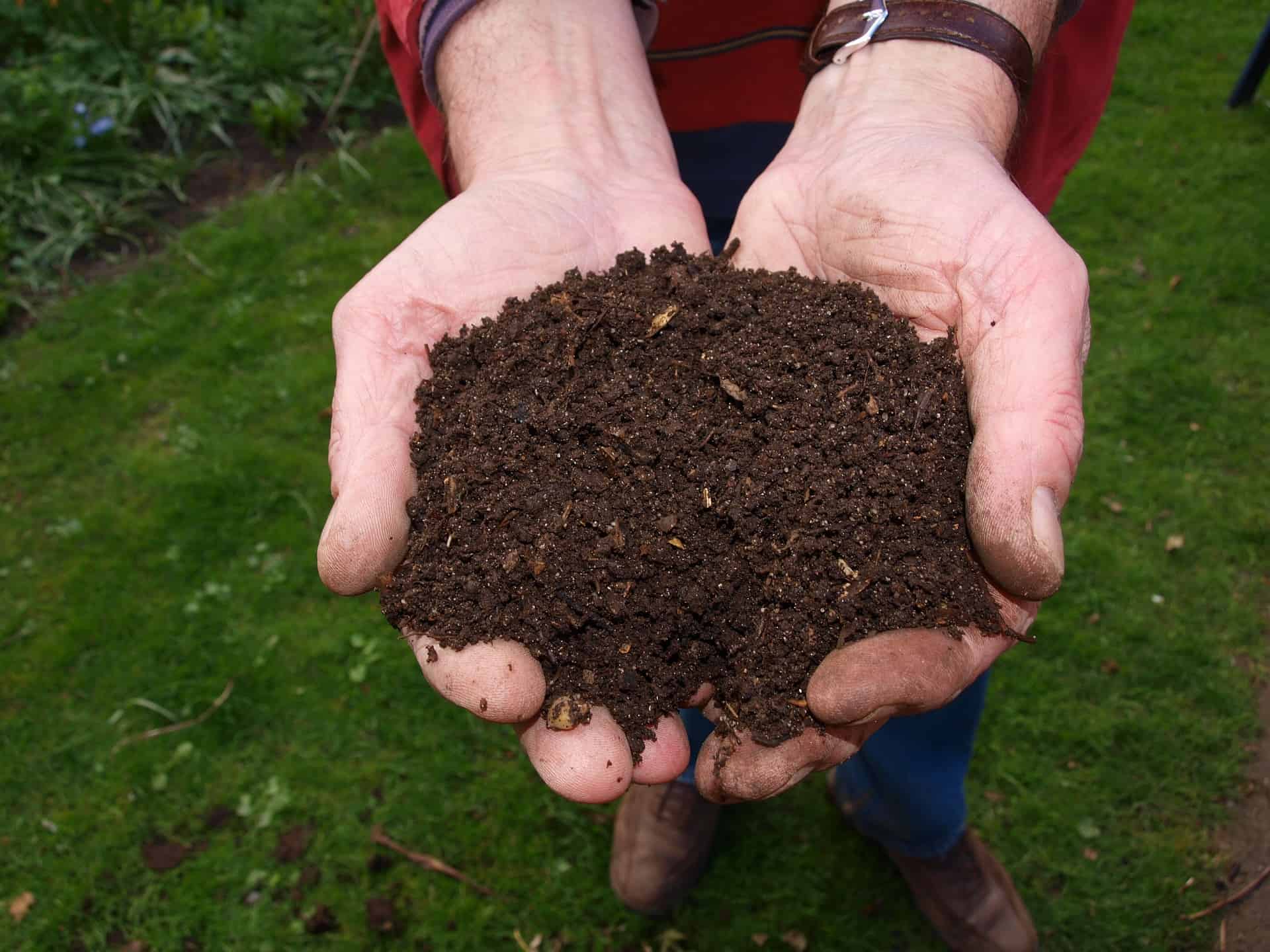
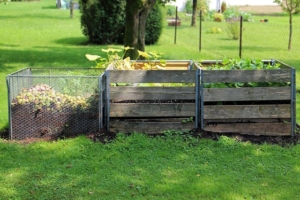 Composting Basics
Composting Basics